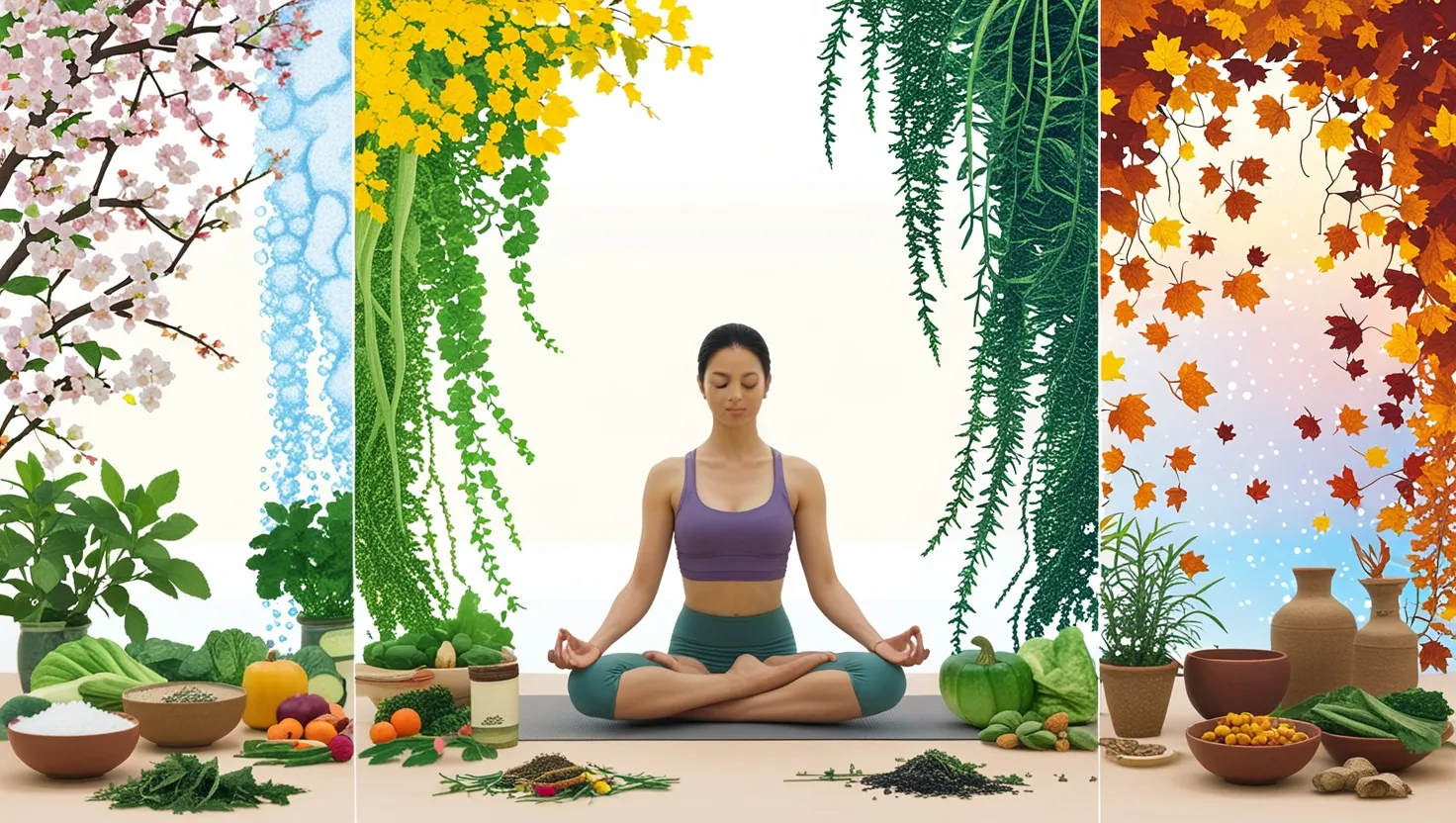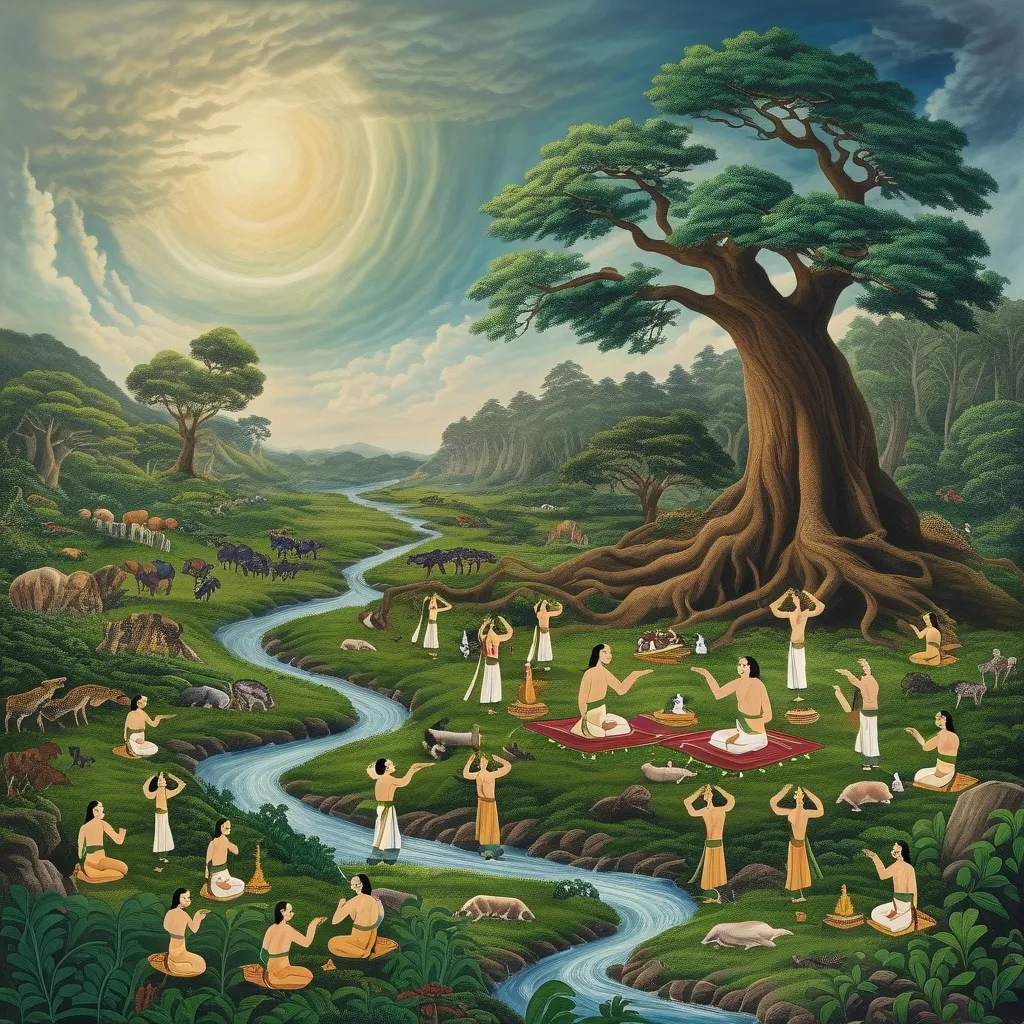If you’ve ever noticed how your energy shifts with the weather or craved certain foods as the seasons turn, you’re not imagining things. The Vedas, ancient Indian texts, consider the dance between our health and nature a relationship so vital, it’s built right into their earliest approaches to well-being. Let’s talk about six foundational Vedic principles for staying healthy through the year, exploring some less talked-about wisdom and why these ideas matter for both body and mind.
What if your body was not just a biological machine but also a finely tuned instrument responding to the world’s rhythms? That’s the view in Vedic philosophy. Here, your daily habits aren’t random—they’re part of cosmic timing, synchronized with the changing face of nature outside your window. Small adjustments promised better health and self-understanding. But what are these principles, and why do they feel more relevant now than ever?
First, there’s the idea that health never stands still. Have you felt unusually hungry in November or oddly restless when the leaves start to fall? The Vedas state that our digestion, immunity, and even moods cycle with the sun and seasons. Early winter boosts digestion—think of how you can suddenly handle heavier meals—while spring brings a need for cleansing as both body and earth shake off their winter haze.
The seasonal shift is not just about the weather outside; it’s in our bones. This is why the Vedic tradition teaches ritucharya, or seasonal regimen. Each season, as outlined, has its own prescriptions for food, sleep, exercise, and mental care. It’s not “one-size-fits-all” advice, but a dynamic way of responding, so you’re less at the mercy of colds in autumn or sluggishness in late winter.
Seasonal eating is more than a health fad in the Vedic system—it’s a fundamental way to support digestion and energy. In summer, you reach for cooling, hydrating foods like rice and ghee, as these balance the sharpness of the sun and prevent internal heat from building. In the cold months, root vegetables, oils, and warming spices like sesame help build strength and encourage a quieter, more restorative energy.
Here’s a question: How often do we ignore our changing appetites in favor of what’s convenient or trendy? The Vedas would have us look to nature’s own cycles, trusting that the best foods for us are those that ripen or are harvested in sync with the seasons.
Detoxification takes on a unique twist in spring, when the environment is waking up. According to Vedic guidance, this is the most effective time to gently purge the body of winter’s heaviness, making room for new energy. This isn’t about harsh fasts or modern cleanses; instead, it’s a mindful shift to lighter foods, more movement, and simple rituals that mirror nature’s own refresh process. Even subtle acts—such as sipping warm herbal teas in place of heavy meals—matter here.
“A healthy outside starts from the inside.” – Robert Urich
Another principle is adaptability in daily routines. Consider this: Should your sleep and exercise schedules remain identical from January to July? The Vedas suggest not. In the longer, cooler nights of winter, more sleep and vigorous activity later in the day build internal warmth and stability. As summer approaches, early rising and gentler exercise avoid overexertion in the heat. These shifts are subtle yet powerful, helping you meet each day in its own context, rather than battling against the flow.
Herbal regimens, too, are seasonally tailored. Unlike the Western tendency to use the same supplements year-round, Vedic tradition matches plants to both time and need. During the monsoon, the dampness invites immune-boosting herbs like ginger and turmeric. As autumn arrives with dryness, demulcent herbs like licorice restore moisture. Using plants at their seasonal peak is both efficient and surprisingly modern, echoing current interests in local, fresh botanicals.
Are there specific habits you could tweak as the seasons change? Sometimes the answer isn’t more complexity, but more awareness—using what’s at its best and trusting in small, regular actions.
Mental health and mood, often sidelined in discussions about seasonal wellness, get special attention here. Autumn’s dryness and movement can stir up restlessness or anxiety; winter’s stillness leads to inner stagnation or low spirits. The Vedas don’t separate the mind from the body. Instead, practices like seasonal meditation or chanting certain mantras are recommended to help the mind settle or energize, depending on what’s needed. Even today, the calming effect of sound, breath, and mindfulness is well recognized in neuroscience.
“Peace comes from within. Do not seek it without.” – Buddha
It’s easy to view these guidelines as strict prescriptions—or, conversely, as too philosophical for everyday use. But their power lies in their flexibility and deep respect for our individuality. The Vedic insight is that everyone’s response to the same season can differ. One person might feel invigorated by winter’s chill, while another feels sluggish. Recognizing this, the tradition invites self-inquiry: What do you need right now? How does your body respond as the light changes outside?
I find it helpful to pause at the start of each season and ask: Is my current routine helping or hindering my well-being? What could I experiment with—more rest, a different breakfast, a mindful walk before dinner—as nature sets a new pace?
The Vedic texts also pay attention to transitions between seasons—a time modern wellness often overlooks. It’s these in-between moments that carry the most risk for imbalance; our bodies are recalibrating, not quite settled. By making adjustments early, you’re less likely to feel “off” when the weather suddenly turns or when common coughs and allergies appear.
Curiously, some lesser-known practices involve not just what we eat or do, but how we interact with others and our environment. For example, the Vedas recommend seasonal variation in social activity—spending more time in community as days lengthen, and drawing inward for reflection during winter’s darker stretch. Even the timing and intensity of intimate relationships, work, and leisure adjust with the natural world.
“Nature does not hurry, yet everything is accomplished.” – Lao Tzu
Why does all this matter now, in a fast-paced, mostly indoor, and climate-controlled world? Many of us have lost touch with subtle cues: temperature, light, the feel of the air. Yet, studies confirm—we’re still affected, whether we notice or not. The Vedic approach urges us to reclaim this awareness, not just for health, but for a richer, more connected experience of living.
By aligning with these six Vedic principles—adapting routines, meals, herbs, detoxes, sleep, and even emotions to the seasons—I find the year feels less like a random rush and more like a series of invitations. Instead of bracing against every change, I can move with it; instead of fighting nature, I work with it. This mindset doesn’t require radical shifts, only small, deliberate acts of tuning in.
So, as the days grow longer or shorter, as the air dries out or grows thick with the scents of rain, I ask: What is this season calling for? What do I need to let go, and where can I add something supportive? These conversations, though ancient, are just as useful in a modern apartment as they were in a hermitage thousands of years ago.
One of the most radical yet practical reminders from the Vedic texts is that health is never static. We are part of a world in constant motion, and resilience comes from being able to adjust—gently, wisely, and with curiosity. Imagine the year ahead as a chance to experiment with small changes, guided by nature’s own clock. The benefits, I’ve found, aren’t only physical. They ripple out—into energy, mood, and a quiet sense of belonging to something larger than myself.
“Look deep into nature, and then you will understand everything better.” – Albert Einstein
By embracing these seasonal principles, I gain an ongoing toolkit for well-being: nourishing foods, timely rest, supportive herbs, mindful movement, and a respect for changing moods. Nature’s cycles become not obstacles but guides, and health itself becomes a creative, adaptive process—one season, and one day, at a time.






